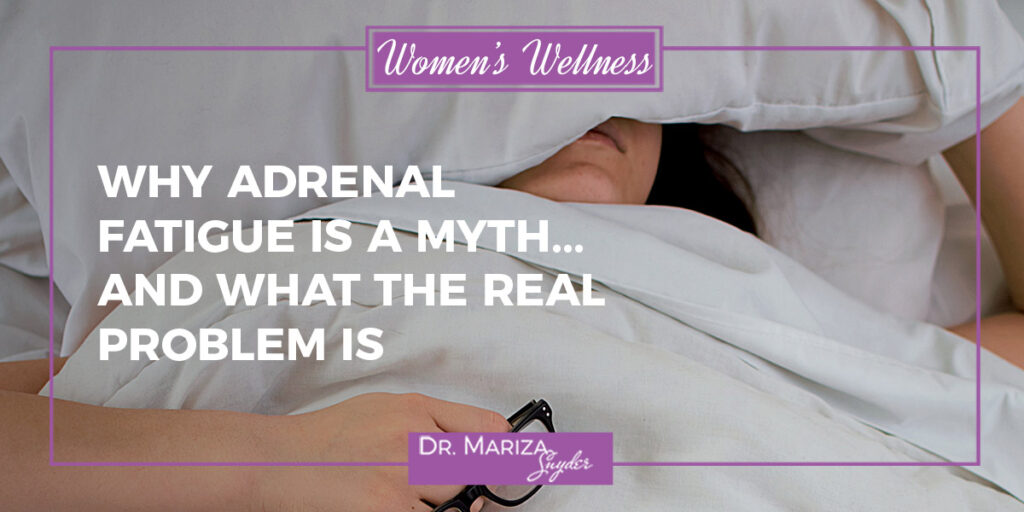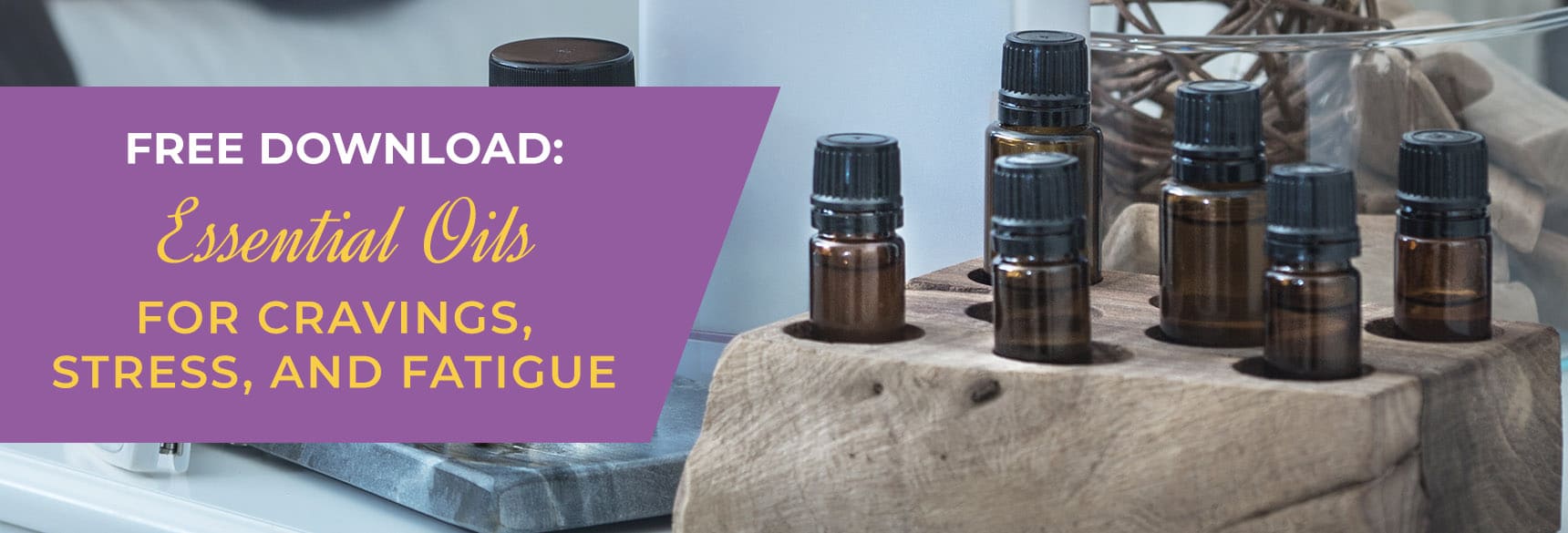
My health has come a long way in the last 10 years. I am proof that it is NOT too late, and there are always natural ways to get your body and energy back.
Sometimes I flash back to 10 years ago…
When I willed my eyelids to open in the morning…
When I had to pep talk myself to lift my head off of the pillow…
When slamming the snooze button multiple times was my morning self-care ritual…
When exhaustion ruled and ruined my authentic self…
When my morning mantra was, “How can I give my all to my patients if I can’t even care for myself?”
I felt alone.
I felt helpless.
I felt broken.
And I told myself a huge lie…
That it was “all in my head.”
But the more research I did and the more patients I saw that mirrored my own personal secret symptoms, the more I realized this was a female epidemic, and NOT a figment of my imagination.
Adrenal fatigue became my diagnosis after I enlisted the health of some rockstar healthcare professionals, and I ran with it.
But there was this nagging suspicion that I had the more research that I did and the more women who opened their hearts to me…there was more to this puzzle than just worn-out adrenals.
So, I backed up to take a deeper look at the roots of what causes this unspeakable exhaustion in the first place.
And guess what I found and the base of everyone’s tree?
STRESS. A major truckload, piled high for years, crushing-you-into-the-ground-until-your-symptoms-smother-you, life-draining, chronic stress.
You see, those cute little adrenals perched atop your kidneys are simply the messengers. (And as you know, you “don’t shoot the messenger!”)
But that is exactly what we did years ago when we realized the adrenals produced the cortisol that was overloading our circuits. We blamed the messenger and didn’t realize the problem lay farther north in our limbic brain where the survival stress response originates.
The Science Behind the Stress
I’m about to check into science-nerd for a moment, but bear with me…this is important.
Your stress-response system has two main MOs:
- The SAS, or Sympathoadrenal Medullary System
- The HPA Axis, your Hypothalamic-Pituitary-Adrenal Axis
The SAS works for acute stressors and helps you to redirect energy to quickly respond with a fight-or-flight response.
The HPA Axis, however, chugs along protecting us from intermediate and long-term stressors that plague us on a continual basis.
But what if this SAS becomes constantly activated by this 21st century nonstop world that we live in? Social media, continuous to-dos, crazy schedules, environmental pollutants, poor nutrition…
We rush from one thing to the next just trying to survive the day, allowing ourselves to be triggered constantly by stressors whether we realize it or not.
This keeps your stress response activated all. the. time., meaning your HPA Axis gets pinged over and over and over all day long.
Living in a constant state of acute stress—survival mode—really depletes your body quickly of prime nutrients and energy, leading to elevation of cortisol and insulin while suppressing key hormonal factors. This creates metabolic stress that tells the body to hang onto energy reserves in the form of belly fat, which also allows for inflammation and other stressors to affect your overall well-being.
The Outward Results of Chronic Stress
And what do we see on the outside?
- Fatigue
- Insomnia
- Irritability
- Depression
- Anxiety
- Cravings
- Binge eating
- Afternoon crashes
- Dependence on caffeine or sugar or salt
- Inner-tube weight gain
- Frequent colds
- PMS issues
- Brain fog
- Forgetfulness
- Diarrhea or constipation
- Cramps
- Heart palpitations
- Joint pain
- Muscle fatigue
And because they don’t hit all at once, we go to the doctor for help with them individually or a few at a time. Often they correspond with times in our lives when women normally change, and we get misdiagnosed as perimenopausal. Or they chalk it up to PMS.
Other times a severely stressful event like a death or divorce may have triggered a windfall of symptoms, but the doctors only see the current symptoms and situations rather than the lingering stress of “normal” life that has plagued your body before the real doozy sent you overboard.
When your metabolism has no reserves left to handle everyday stress and your immediate capacity to handle it—your resilience—is shot, you are running on empty.
And it is all the fault of stress and your HPA Axis’ inability to properly handle it.
The Adrenal Fatigue Myth
So, back to the adrenals and how we blamed them too soon…
Since the adrenals produce cortisol and we assumed constant stress plagues them, it was hypothesized that they just became unable to produce it over time.
The problem is, the more scientists studied the stress hormones, the more we realized that cortisol wasn’t going down over time.
Our initial testing only targeted about 3-5% of the total cortisol in the body at any given time. Where is the rest of it? Being cleared out via metabolic pathways and headed out of the body in your urine (which is why I always recommend the DUTCH test for cortisol!).
Total Cortisol + Free Cortisol = The Bigger Picture
Just because you have low free cortisol doesn’t mean that you have low total cortisol. In fact, it is even more common for you to have normal or high total cortisol.
Negative Feedback Loops
The adrenals simply produce the cortisol, but have nothing to do with regulation of the body’s levels of cortisol. Remember, they are simply the messengers receiving info from the brain to produce more!
The regulators are where we need to be looking to break free of the constant exhaustion that is making each and every day so hard. These are the top 2 culprits:
#1 – The HPA Axis – The HPA Axis down-regulates to protect our bodies from the effects of high cortisol levels. Basically, it decreases the sensitivity of some receptors in order to regulate the cortisol levels, but this sends a message to the adrenals to produce less cortisol, causing a shortage of cortisol in the body, especially in the mornings. This is why you feel exhausted in the morning even when you may have had a good night’s sleep.
#2 – Cortisol Resistance – When levels of cortisol run too high for too long, the body’s cortisol sensors desensitize to it to protect your body. This is very similar to insulin resistance. The body protects itself, but causes low cortisol over time.
What’s to blame? Your brain. Your stressed-out way of living. NOT your adrenals.
The Bottom Line
Your adrenals are perfectly capable of producing the cortisol that your body needs, but your limbic brain is sending a “slow-down” message to them.
The problem lies in the activation or deactivation of the HPA Axis and how our stress response attempts to protect us from loss of resilience and depletion of our metabolic reserves.
What we really need to focus on is supporting our HPA Axis and keeping our stress levels to a minimum so that we can remain resilient in the face of danger…and life!
For today, here are some places you can start:
#1: Invest in daily self care. You may feel like you’re “too busy” or “too tired” to spend 15-20 minutes caring for your mind every day, but I promise it’s worth it. Even if that seems like too much, just 5 minutes in the morning where you reorient your priorities, spend time thinking of things you’re grateful for, and setting powerful intentions for how you’ll care for yourself all day will go a LONG way to resetting this constantly hyped-up stress response.
This is the very reason I use and LOVE my Daily Self-Care Journal. I created it for busy, stressed-out women (and I know it works because I am one of those) who need some help remembering themselves amidst the crazy. In only 5 minutes, you give yourself the power to decide how you are going to face each day—and the results are astounding! Check out the journal and grab your copy here >>
#2: Correct nutrient deficiencies with supplements. When you’re stressed, you burn through key nutrients SO much faster than you would otherwise! Correcting these deficiencies and giving your body the nutrients it needs is a critical step toward relieving the daily symptoms that are dragging you down.
You can’t expect your body to work as it should if it doesn’t have the critical building blocks it needs to build hormones and carry on daily functions!
Some of the biggest culprits here are Vitamin D, B Vitamins, and Magnesium (and I carry all of these in prime bioavailable form in the Essentially Whole® Store). And this is the perfect foundation. But if you want to take it a step further and really hone in on the way your body responds to daily stress, I can’t recommend Adrenal Love enough!!
Adrenal Love is a powerful blend of nutrients and adaptogens that support adrenal health, enable your body to recalibrate its stress response, and protect your systems from the long-term damage stress can cause. It’s the easiest way to up your energy and heal your body, safely and naturally! Get Adrenal Love here today >>
For more practical tips to make this change and support healthy adrenal function, stress responses, and improved energy, check out this post: Top Natural Ways to Heal Your Adrenals and Get More Energy!
Free Download: Essential Oils for Cravings, Stress, and Fatigue
Ready to take charge of your own health? Grab this free guide to get you started!



No comments yet.